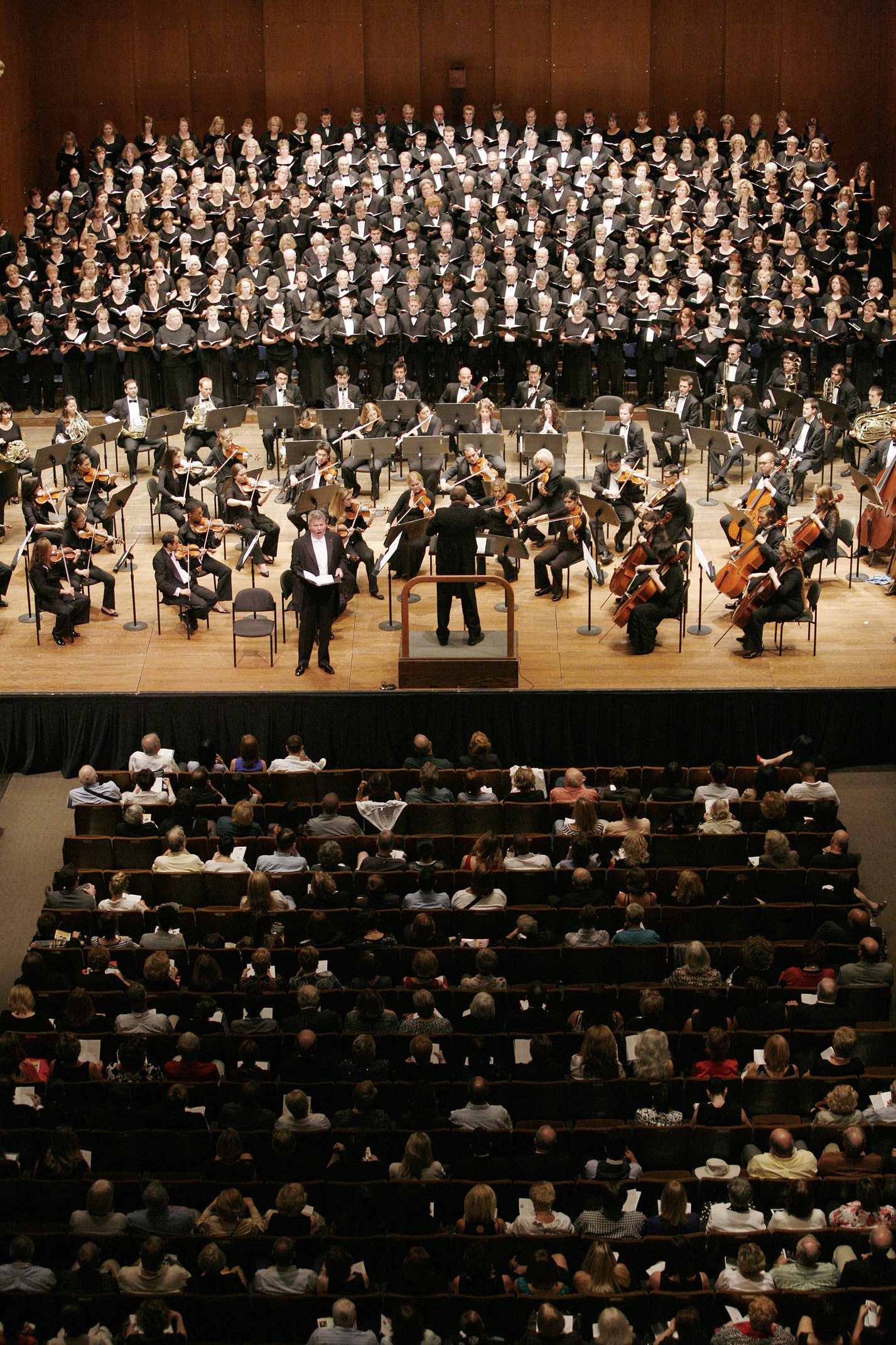Celebrating its 33rd anniversary, the Musica de Camara orchestra presented a concert playing the works of Latin composers and featuring a commissioned work having its World Premiere. A very large and enthusiastic audience was in attendance. There was an air of excitement throughout the hall as the reunion of friends and families took place. Indeed, it was already 25 minutes past the 8pm starting time before everyone had found a seat.
In her pre-concert remarks, founder Eva de La O recounted a story from 33 years ago. She had just given her debut as a singer and was being interviewed on radio. Ms. de La O was asked how she was able to generate interest in her career without a manager, to which she replied that she reached out the Puerto Rican community as a resource. The interviewer responded with, “I didn’t know Puerto Ricans liked classical music!” Ms. de La O was aghast and took this comment as a call to arms. The creation of Musica de Camara was her answer. Musica de Camara’s mission is both to preserve the traditions of Puerto Rican, Hispanic, and African American classical music and to commission works from contemporary composers, particularly from these ethnic groups. We should probably thank this nameless interviewer for his ignorant statement; who knows what wonderful music might have gone unheard over these 33 years had he not uttered these words!
Fuga con Pajarillo by Venezuelan composer Aldemaro Romero (1928-2007) opened the concert. Pajarillo is a Venezuelan folk song, which Romero used as thematic material. Purists might argue about the fugue designation, but there were certainly fugal elements. This is an engaging piece that evokes some of the spirit of Padre Soler with the musical spices of Venezuela. There was the occasional imprecise articulation in the violins that muddied sections, but overall, this was an excellent performance. Abre Los Ojos, Cierra Los Ojos (Open your eyes, Close your eyes) from Columbian composer Hector Martignon (b. 1972) was next. This dreamy piece, with highly chromatic writing and impressionistic elements, was played beautifully from the opening viola solo to the final “closing of the eyes.” Next followed La Bella Cubana by Cuban José Silvestre White (1835-1918), in an arrangement by Dominican Alberto Hernandez (b. 1961). It is a melancholic work tinged with nostalgia and was played with sensitivity without being maudlin. It was a lovely performance. The crowd-pleasing Cañambu by Mexican composer Eduardo Gamboa (b. 1951) followed; the ebullient finale of this work brought loud cheers from the audience. Ending the first half with the Argentinian master of the tango, Astor Piazzolla (1911-1992), Michelangelo 70 was scintillating from start to finish. The audience roared its approval and gave the orchestra a standing ovation.
Maestro Roselin Pabón started the second half by sharing some insights about Jack Delano (1914-1997) and his work Sinfonieta para cuerdas (Sinfonietta for Strings), even having one of the bass players demonstrate the Seis Mapeye motif on which the movement of the same name was built. Delano, born Jacob Ovcharov in what was then in the Russian empire, moved with his family to the United States in 1923 and eventually settled in Puerto Rico in 1946. Two movements of the Sinfonieta were played, the inventive Seis Mapeye, and the optimistic Allegretto giocoso. The Allegretto showed the influence of Ginastera; specifically Estancia. The Camara continued demonstrating their masterful playing; it was another dynamic performance of a gem of a piece.
Tres Secretos en Plena; Encantos de Puerto Rico (Three Secrets in Plena; Charms of Puerto Rico) by the gifted Puerto Rican composer Manuel Calzada (b. 1975), was commissioned by Musica de Camara and given its World Premiere. The Virtuosi Percussion joined the Camara in the role of Pleneros, traditional folk singers who also play tambourines and the guicharo. The charismatic Maestro Pabón gave a brief explanation of the three movements; Dos Misterios en la Ventana (Two Mysteries in the Window), Navegando Sobre la Luz (Sailing over the light), and Camino al Cielo (The Road to Heaven). This work was the high point of the evening to this listener. The brilliant writing, which brought to mind Bartok’s masterpiece Music for Strings, Percussion and Celesta (but not in the derivative sense) and the use of the Virtuosi Percussion in a way that honored Puerto Rican tradition joined together to create a magical effect. When the Virtuosi Percussion came to the front of the stage for the final movement and sang, it brought the house down. A long, loud standing ovation was the result; the composer came to the stage to take his well-deserved bows. The entire movement was repeated as an encore to an even louder ovation. It was a great ending to a great concert.
I must express two reservations: First, the lack of biographical information about the composers is a serious omission. While some of these composers may be well known in their native countries, they cannot be considered “household names” to the music world at large (with the exception of Piazzolla). To omit even the most basic biographical information could make the layperson feel like an outsider. Secondly, while the core audience might understand Spanish titles, idiomatic translations would help those who do not. The door swings both ways; one cannot be indignant about one’s ethnicity being marginalized, while excluding others in a similar way. I am sure this was not the intent, but it is something to consider in the future.
The Musica de Camara orchestra is a “can’t miss” group. Thank you, Eva de La O for your continuing commitment to this wonderful organization. I hope to be present for the 66th anniversary!

